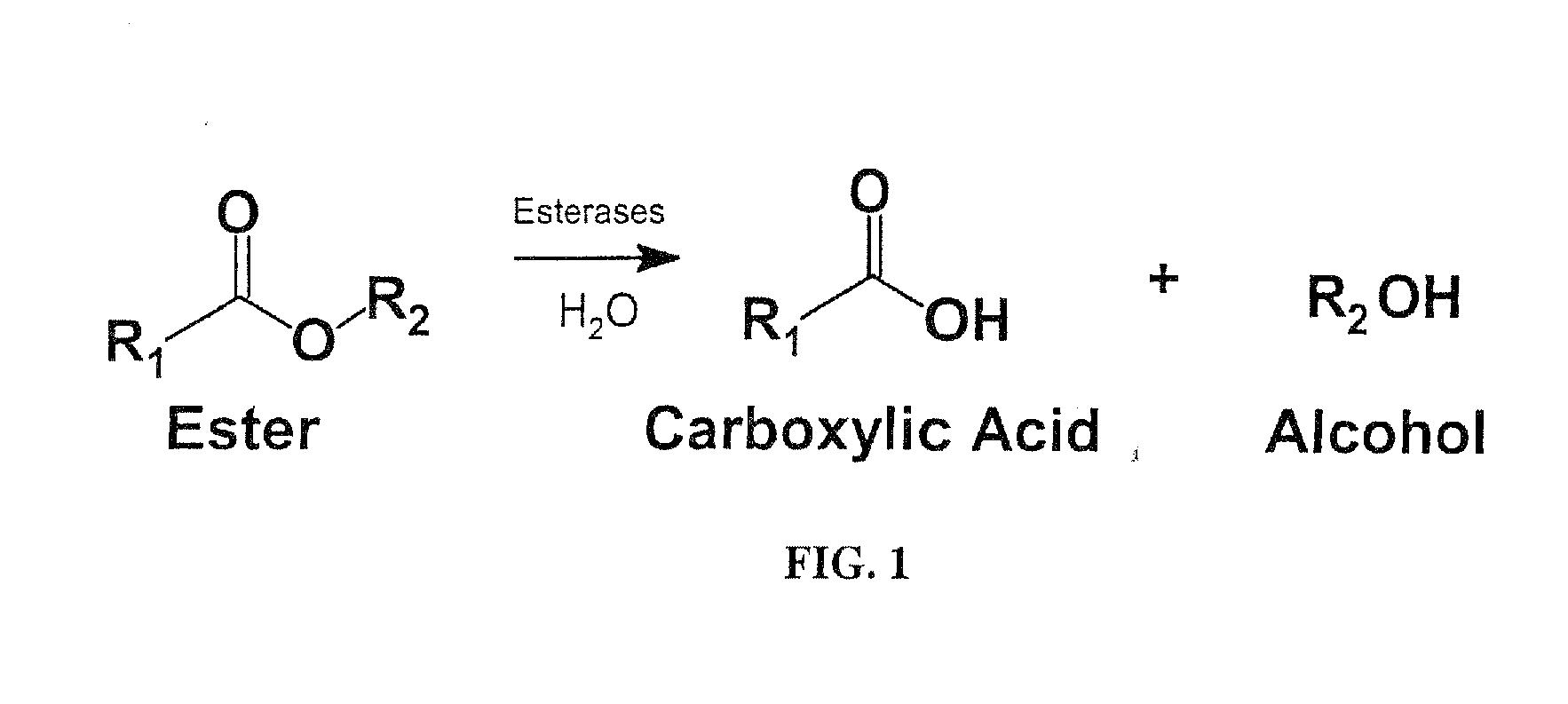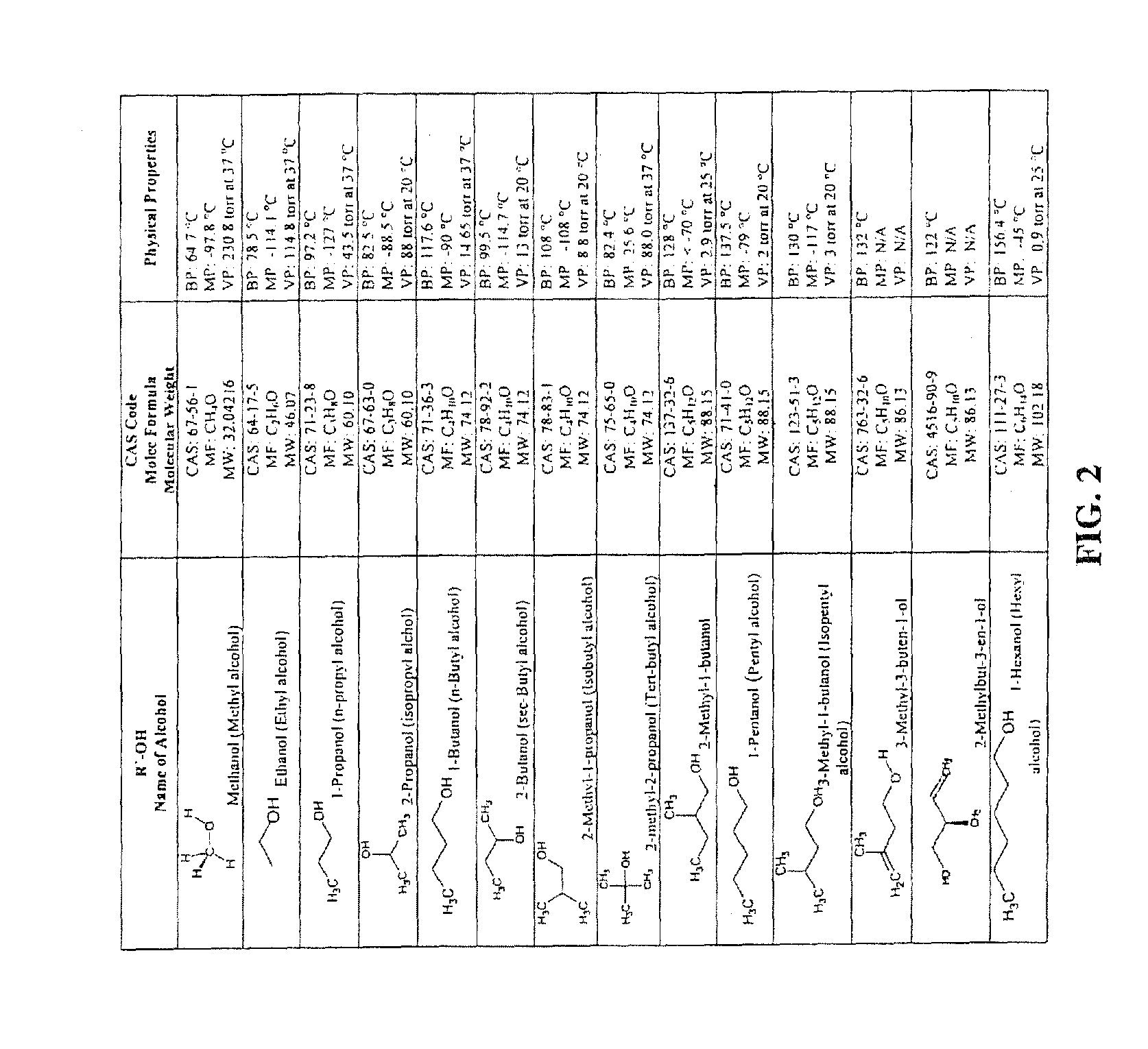Medication Adherence Monitoring System
a monitoring system and medication technology, applied in the field of marker detection, can solve the problems of inability to monitor medication adherence, inability to accurately detect the presence of a marker, so as to reduce the conversion of 1° alcohol taggant and reduce the vapor pressure
- Summary
- Abstract
- Description
- Claims
- Application Information
AI Technical Summary
Benefits of technology
Problems solved by technology
Method used
Image
Examples
example 1
CYP Substrate Example 1
Enzyme: CYP-3A4
[0193]Substrate: Verapamil—FIG. 38. Verapamil (2,8-bis-(3,4-dimethoxyphenyl)-6-methyl-2-isopropyl-6-azaoctanitrile) is a L-type calcium channel blocker that liberates formaldehyde upon oxidative dealkylation (N-demethylation) by CYP-3A4. Orally administered verapamil undergoes extensive metabolism in the liver. One major metabolic pathway is the formation of norverapamil (N-methylated metabolite of verapamil) and formaldehyde by CYP-3A4. Although dependent upon the number of alternate metabolic pathways, the rate of formation of a specific metabolite(s) (i.e., verapamil norverapamil and formaldehyde via CYP-3A4) generally appears to be predictive of in vivo functional enzyme competence. In fact verapamil is metabolized by O-demethylation (25%) and N-dealkylation (40%). The CYP-3A4 is most the important enzyme in humans for metabolizing drugs. It has been estimated that the CYP-3A4 isoform of the P450 system is responsible for metabolizing 55-60%...
example 2
CYP Substrate Example 2
Enzyme: CYP-3A4
[0194]Substrate: Erythromycin—FIG. 39. Erythromycin is a macrolide antibiotic, which prevents protein synthesis in bacteria, and is thus used to treat various infections, particularly in patients who are allergic to penicillin. Because erythromycin is also a potent motolin agonist, it markedly enhances gastric emptying. This gastrokinetic action is known to wane in a short period of time, due to the development of tachyphylaxis / desensitization. The erythromycin breath test (EBT) is used to assess CYP-3A4 function. Erythromycin is N-demethylated by CYP-3A4, and the cleaved methyl group is released as formaldehyde and, eventually, as formic acid then CO2. The test is performed by intravenously administering a trace amount of 14C labeled erythromycin and then measuring the amount of exhaled 14CO2. The rate of release of 14CO2 in expired breath is thought to reflect hepatic CYP3A4 activity. The isotopic labels shown in Table 2 (preferably deuterium)...
example 3
CYP Substrate Example 3
Enzyme: CYP-3A4
[0195]Substrate: Amiodarone—FIG. 40. Amiodarone is one of the most effective antiarrhythmic drugs in clinical medicine. It is highly effective in treating atrial fibrillation, particularly in preventing its re-occurrence. Although this drug has a complex mechanistic profile (blocks sodium channels, beta receptors, calcium channels, and potassium channels) its major electrophysiological action is to prolong repolarization in cardiac tissue, predominantly by blocking potassium channels. Therefore, it is classified as a Class III antiarrythmic drug according to the Vaughn-William Classification. The isotopic labels shown in Table 2 (preferably deuterium), where appropriate, can be used to label various atoms (red circle) of amiodarone, which in turn, will generate isotopic-labeled acetaldehyde that will serve as the preferred embodiment of the EDIM in this example. In addition, isotopic labeling of larger metabolic fragments derived from the parent...
PUM
| Property | Measurement | Unit |
|---|---|---|
| thick | aaaaa | aaaaa |
| humidity | aaaaa | aaaaa |
| temperature | aaaaa | aaaaa |
Abstract
Description
Claims
Application Information
 Login to View More
Login to View More - R&D
- Intellectual Property
- Life Sciences
- Materials
- Tech Scout
- Unparalleled Data Quality
- Higher Quality Content
- 60% Fewer Hallucinations
Browse by: Latest US Patents, China's latest patents, Technical Efficacy Thesaurus, Application Domain, Technology Topic, Popular Technical Reports.
© 2025 PatSnap. All rights reserved.Legal|Privacy policy|Modern Slavery Act Transparency Statement|Sitemap|About US| Contact US: help@patsnap.com



